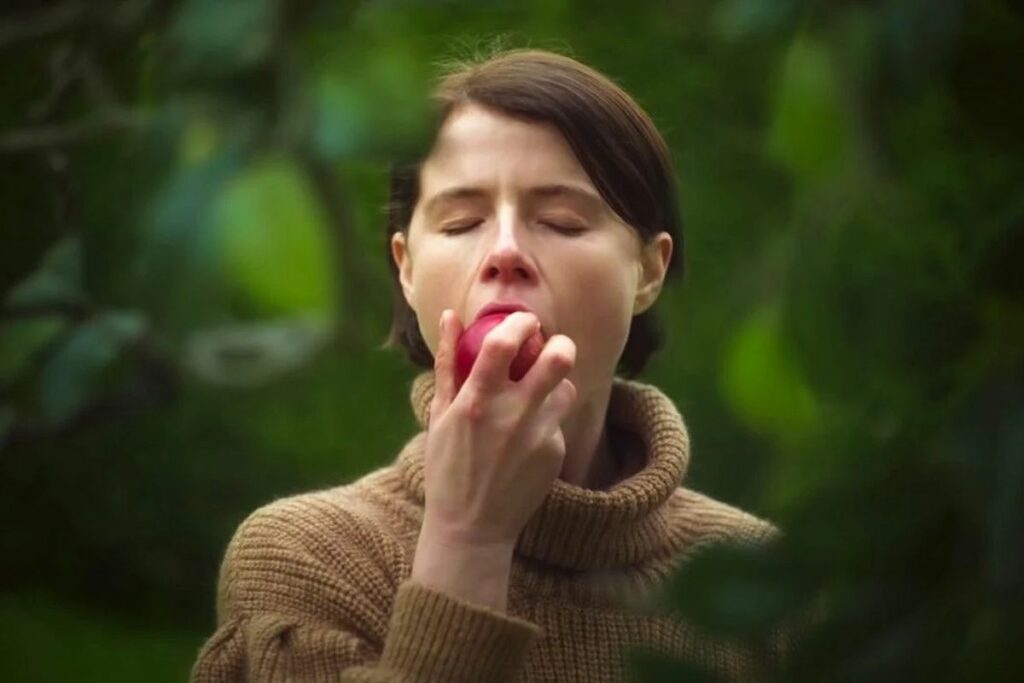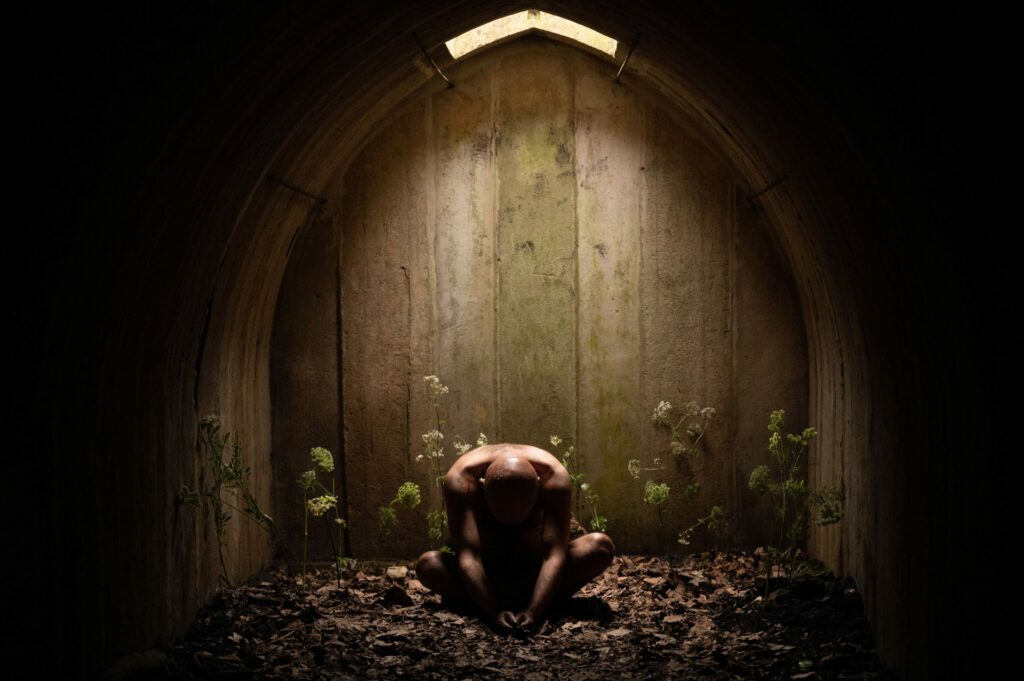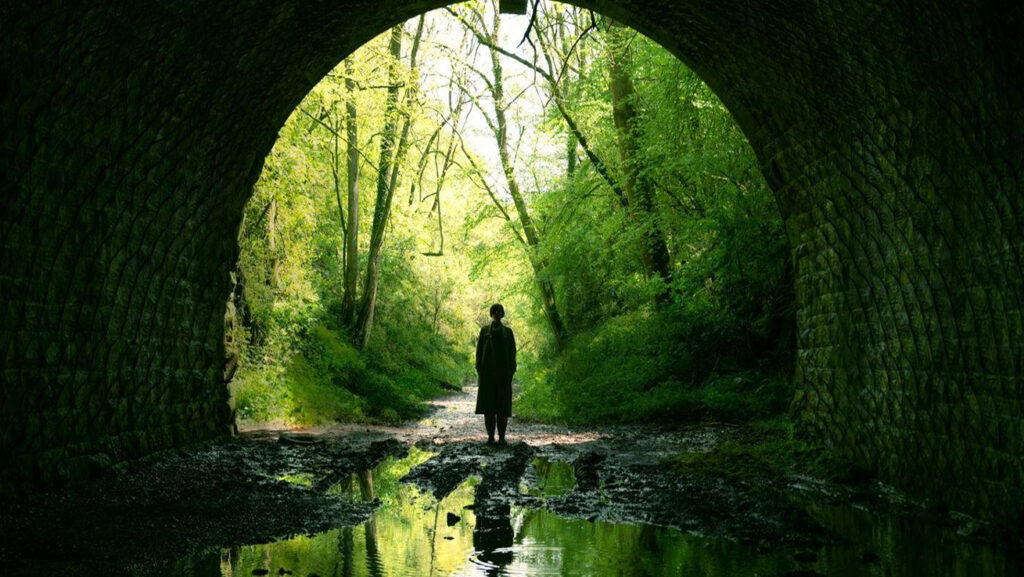Men, directed by Alex Garland, is the story of women fated to bear the onus of men’s shortcomings – an inescapable destiny imbued with religious, mythological, and supernatural contexts. Throughout the film, it becomes apparent that protagonist Harper (Jessie Buckley) – who blatantly functions as a passive, erotic object for the male characters within the mise-en-scene – is hyperaware of her objectification and, despite attempts to escape, becomes consumed by its all-encompassing reach.
Upon her arrival at the manor, Harper plucks an apple from a tree, taking a bite. Here, there is a nod towards the initial temptation, a fundamental carnality; and it is from this image that the narrative starts to unfurl. The owner of the house (Rory Kinnear) underpins the importance of this moment, playfully mocking Harper for her “scrumping”.

Various iterations of this very man begin to crop up throughout the town: an unruly child, an amoral vicar, an unbothered policeman and in particular, the nude man. Always looming, sometimes threatening, other times subdued, there is nonetheless a tangible sense of men’s sense of entitlement not only to Harper but to women in general. All instantiations of Kinnear give the impression that he wants to be soon, that he wants the women to know they are being violated.
As stated by film theorist Laura Mulvey, this “male gaze” often suggests a sexualised way of looking that positions women as “objects”, particularly of heterosexual male desire. In the case of Men, Harper – including her feelings, thoughts, and aspirations – is framed solely as the object of male desirability, and thus, of their violence. Amidst the dreary atmosphere, Harper is both haunted and hunted by this gaze on an institutional, social, and supernatural level.

For her, it begins with a lingering look – a casual conversation, an off-handed comment, a hand cascaded loosely over her thigh. Soon, however, these slights crescendo, culminating in a fist to the cheek incurred by her since-deceased husband, James (Paapa Essiedu). The moment is echoed by the eventual assaults inflicted by men in the countryside. In these escalations, it is made apparent that this violence begins in the act of looking. For Garland, this alludes to the understanding that the crux of male violence does not reside in any particular action, but in the fundamental objectification of women, made known by their actions and inactions as a whole. In this way, the male characters within Men are the actualised embodiment of these prejudices, reducing them to vapid, clamouring beacons of instability. As such, Harper is barely there. Reactively, she becomes the passive woman; the spectacle, the observed.
The cinematographic, red-tinted colour palette further expresses an understanding of this lived reality; that women, under this unwavering gaze, inhabit an existence that is tinted at every corner by patriarchal despair, desire, and rage. Within it, the whole of society is debased. With many subtle occurrences – the initial symbolism of the “forbidden” fruit, the leaning stack of red bibles, an overturned cross nestled by the countryside church, the scarlet hues painted throughout various rooms in manor, the congregation of natural and supernatural gore, even the distorted “feminine” mask initially worn by the child – every detail works to emphasise the suffocating and all-encompassing impact of patriarchal violence on Harper’s life.

With that said, Men, when stripped down to the essentials, is about women attempting to escape seemingly inescapable violence. While James has died, the torment he caused Harper never leaves her. Through a series of flashbacks, the audience is able to piece together the complexities of his death and of the marriage itself; namely, the roots of an all-encompassing cycle. As such, it is apparent that Harper is not only attempting to outrun a sense of guilt but the interpersonal violence she was made to bear.
Men is out in cinemas now.
